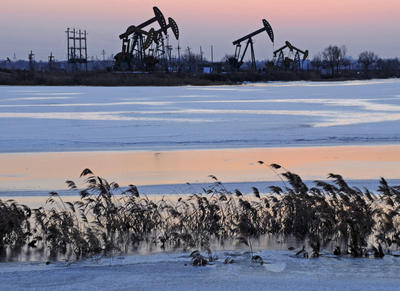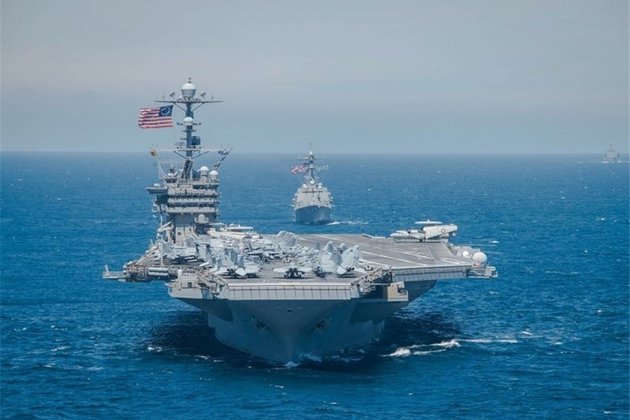Politics
Need for greater energy cooperation in Asia

Led by China, Asia — the ASEAN nations, China, India, Japan, South Korea, Australia and New Zealand — was the major contributor to growth in the global economy in the first decade of this century.
Asian demand for primary energy grew by over 70 per cent in this period and accounted for more than 65 per cent of total global primary energy growth. While some countries — Japan, South Korea, Australia, New Zealand and Singapore — are rich, others, including the most populous (China, India, Indonesia, Malaysia and Thailand), are middle-income countries now in the energy-intensive development phase. Primary energy consumption ranges from 150 gigajoules per capita (GJ/cap) in Australia to 12 GJ/cap in the Philippines. By way of contrast, China sits at 50 GJ/cap, India 16 GJ/cap and Japan 110 GJ/cap.

As the middle-income countries become major players in global energy it is only to be expected that governments will become increasingly concerned with security of energy supply. This is critical to the steady improvement in the standard of living required to approach the comforts enjoyed by developed nations.
Asia’s energy growth is led by China, which has accounted for some 50 per cent of global energy demand growth in the last decade. China is now the world’s largest energy consumer and second-largest consumer of oil. Asia accounts for around 60 per cent of traded Liquefied Natural Gas (LNG) and 70 per cent of traded seaborne coal. Despite substantial indigenous resources in the form of coal (China, India, Indonesia and Australia) and oil/gas (Malaysia, Brunei, Indonesia and Australia), the region looks set to remain a net importer of energy.
Recent events have brought energy security into sharper focus around the world. Accidents, natural disasters and geopolitical events have all played a part in this: the 2010 Macondo well blowout in the Gulf of Mexico halted deepwater production there, albeit temporarily; the 2011 Fukushima nuclear accident in Japan led to additional energy imports to replace nuclear power lost by damage or shutdown; the Arab Spring uprising in Libya in 2011 and US and EU sanctions on Iranian exports in 2012 also disrupted oil supply. Each of these events increased oil prices, although the impact was partly offset by the global financial crisis that reduced demand growth.
Shell analysis projects Asian primary energy demand could further rise by around 40 per cent over the current decade. In contrast, European and North American primary energy demand will increase by less than 5 per cent. Asia’s growth is driven by both a burgeoning population and the region’s rising prosperity. Securing reliable access to energy to meet this demand will be challenging. For example, as mature oil provinces go into decline, new oil will come from more difficult reservoirs or remote locations, increasing both cost and supply risk. Coal, while relatively abundant, has drawbacks on both local air quality and global warming impact. Developing new energy resources and infrastructure will require massive investment. The International Energy Agency (IEA) estimates investment in wider Asia in power, oil and gas over the next 20 years could amount to US$10 trillion. So, while Europe and North America benefitted from relatively abundant energy through their period of industrial growth, Asian countries in their energy-intensive development phase face a more complex future — not least the need to deal with growing global carbon emissions that threaten to become a greater source of tension between developed and developing countries.
Energy security strategies in developing Asia are typically based on exploiting domestic resources, encouraging energy efficiency and buying international energy assets, often through government-controlled national companies. While the latter course may not lead immediately to the direct shipment of oil and gas to the sponsoring country, it can help in areas such as capturing project learning, accessing new technologies and growing capabilities in global markets and trading.
In an increasingly competitive energy world, a wider range of energy security policies should be considered. These span three broad categories: increasing supply robustness through diversity, improving resilience through flexibility or redundancy and, finally, reducing energy intensity.
Today, China imports more than half of its oil, much originating from the Middle East. More than 15 million barrels of oil (one-sixth of global demand) travels through the Straits of Malacca each day, presenting a possible security weak point. A similar vulnerability is faced by oil passing by the Horn of Africa. Before the Fukushima accident, Japan sourced one quarter of its electricity from nuclear power. These points demonstrate the potential risks inherent in over-reliance on a single source of supply.
The first set of strategies aims to reduce the likelihood of disruption through increasing system robustness. These include: developing domestic resources with relatively short and controllable supply lines; sourcing energy imports from many locations with different supply routes; building a balanced mix of fuel-types in the supply portfolio, including renewables, nuclear, hydro-electric or geothermal energy; and building fuel storage infrastructure as a buffer to supply disruption or price volatility, such as the IEA-managed strategic oil stocks for OECD countries. Coordination of stock releases in the region with the IEA might also help improve overall oil supply resilience.
The second set of strategies helps to reduce the magnitude of any disruptive event by providing system flexibility and redundancy. The ability to rapidly supply more oil and LNG into post-Fukushima Japan is an example of how liquid and connected markets can improve system resilience. A well-functioning market creates price transparency and can help to reduce price volatility under normal market operating conditions, improving economic efficiency. Infrastructure redundancy can also help, albeit at incremental cost. Excess system capacity, multiple and interconnected pipelines, multi-fuel power stations and trans-national power grids are all examples of ways to improve interconnectivity through infrastructure. Assessing the cost–benefit of investment in redundancy can be difficult because of the low probability but high cost of major disruptions. But even here there are often options to reduce cost. For example, the cost of building a dual gas and power grid in a new city is relatively small, at around 15 per cent more than the cost of a single grid, whereas the incremental cost is much higher if retrofitted. For those living in remote areas, local renewable generation can also offer resilience against poor infrastructure or provide access to energy where none exists.
Finally, perhaps the most sustainable option for enhancing energy security lies in reducing the energy intensity of an economy. To be sure, efficiency has a role to play here, but other options are available. Well planned and compact cities with interconnected public transport infrastructure can help to reduce overall transport-demand growth and have the added benefit of controlling congestion. Bus rapid transit systems are one cost-effective means to meet city transport needs. Urban design and planning can lock-in the long-term energy demand pattern of cities, for good or for bad. More good solutions and fewer bad solutions are needed. Fuel subsidies, while seeking to help the poor, can also drive energy waste. While removing subsidies too quickly is politically challenging, as demonstrated recently in India, reducing such payments should be the long-term goal of countries that continue to subsidise energy.
The future energy system is characterised by growing demand, increasing cost of supply and the need to manage energy’s climate footprint. Few countries can claim true energy independence, and thus energy security is a problem of geopolitics as much as economics. As the main region of energy growth in the coming decades, Asian countries face challenging energy policy choices. Whether they cooperate or compete for access to energy will shape long-term relationships regionally and globally. In our view, cooperation is more likely to lead to a more secure energy future for all.
Authors: Jack Barnes and Suman Bery, Shell
Dr Jack Barnes is Senior Energy Adviser, and Mr Suman Bery is Chief Economist, at Royal Dutch Shell PLC.
This article appeared in the most recent edition of the East Asia Forum Quarterly, ‘Energy, Resources and Food’.
Politics
US Navy Carrier Conducts Exercises in South China Sea

TEHRAN (Tasnim) – A US Navy aircraft carrier conducted exercises in the contested South China Sea on Friday, the US navy said in a statement. –
A strike group led by the USS Ronald Reagan conducted flight operations and high-end maritime stability operations and exercises, the statement said, Reuters reported.”Integration with our joint partners is essential to ensuring joint force responsiveness and lethality, and maintaining a free and open Indo-Pacific,” US Navy Commander Joshua Fagan, Task Force 70 air operations officer aboard USS Ronald Reagan, was quoted as saying.The drill comes amid heightened tensions between the United States and China.
Washington has criticized Beijing over its novel coronavirus response and accuses it of taking advantage of the pandemic to push territorial claims in the South China Sea and elsewhere.The United States has long opposed China’s expansive territorial claims in the South China Sea and has sent warships regularly through the strategic waterway.China has objected to such exercises and said the US rejection of its claims in the South China Sea has raised tension and undermined stability in the region.China claims nine tenths of the resource-rich South China Sea, through which some $3 trillion of trade passes a year. Brunei, Malaysia, the Philippines, Taiwan and Vietnam have competing claims.
Politics
How China is using tourism for geopolitical goals
The Chinese government has a degree of leverage over its tourists that other governments do not enjoy. Many Chinese tourists are new to international tourism and have limited international language abilities

Decades of astonishing economic growth have given China new tools for extending its influence abroad and achieving its political goals.
(more…)












